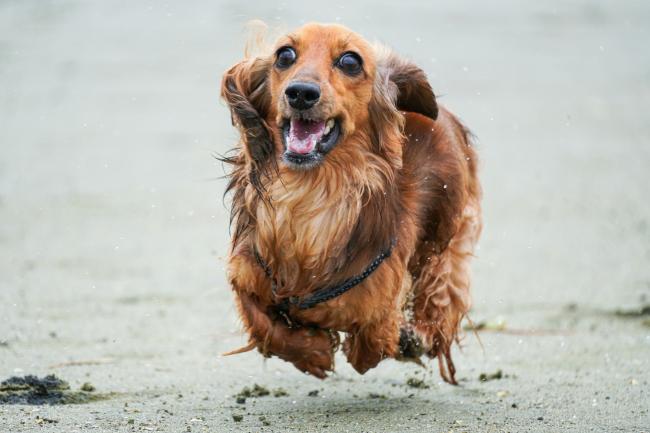Dog Behaviour & Boarding: Lessons from Superman’s Krypto
With James Gunn’s new Superman film soaring through cinemas, it’s not just the Man of Steel stealing the spotlight—his loyal sidekick, Krypto the Superdog, is capturing hearts worldwide. In the film, Superman finds himself in an unexpected role familiar to many pet sitters: caring for an unruly dog that isn’t his own. Krypto has quickly emerged as the film’s breakout star—and his naughty influence is leaping far beyond the big screen.
Multiple outlets—including The Guardian, IGN, and the New York Post—are reporting a huge spike in online searches for dog adoption. The Guardian even states that adoption app Woof recorded a 513% increase in searches for “adopt a dog near me” following the film’s US release in July.
While this wave of enthusiasm for dogs is heartwarming, it also presents a familiar challenge for pet professionals and sitters: behaviour and training. Because while Krypto might be a superpowered Kryptonian canine, he still represents a very real issue—what happens when dogs aren’t trained or socialised properly?
This isn’t a new trend either. Following the COVID-19 lockdowns, vets and behavioural experts noted a sharp rise in problem behaviours in dogs that had become overly reliant on constant human presence (BBC).

Signs Your Dog Is Suited for Home Boarding
If you’re thinking about home boarding, it’s important to assess your dog’s readiness. Dogs who are social, comfortable in new environments, and well-behaved generally do best. This is particularly important in the context of responsible pet ownership—ensuring your dog’s behaviour won’t cause stress or harm to themselves or others during a stay.
Signs your dog may be ready include:
- Friendly and comfortable with both people and other dogs.
- Used to spending time away from you without anxiety.
- House-trained and accustomed to indoor living.
- Able to be left alone briefly without distress.
- Not prone to excessive barking or destructive behaviours.
Preparing Your Dog for Home Boarding and Dealing with Behavioural Issues
Dealing with behavioural issues through professional training early helps ensure a successful boarding or doggy daycare experience.
Alongside that ongoing training, here are tips to prepare your dog:
- Arrange trial stays to help your dog acclimate.
- Use crate training to provide a familiar safe space.
- Gradually socialise your dog with new environments, people, and pets.
- Practice short separations to reduce anxiety.
The Importance of a Meet & Greet
Scheduling a Meet & Greet is crucial to ensure your dog and sitter are a good match. This introduction helps both parties set expectations around your dog’s behaviour and care routine, promoting responsible pet ownership and a positive experience for your dog.

Alternatives to Home Boarding: Doggy Daycare and More
If home boarding isn’t suitable, doggy daycare offers a structured, social environment ideal for active dogs who thrive in group settings. For dogs who prefer familiarity, pet sitting at home or kennels may be better choices.
Understanding dog behaviour helps you choose the best care option that aligns with your dog’s temperament and needs.
Dog Boarding vs. Kennels: What’s Best for Your Dog?
Dog kennels provide a commercial boarding environment, often with many dogs housed separately. Home boarding offers a quieter, more personalised setting, often preferred by dogs who are sensitive to noise or large groups.
Choosing between these options is part of responsible pet ownership—matching your dog’s behaviour and needs to the right care environment.
How to Meet New Dogs Respectfully and Safely
Respecting dog etiquette and reading dog behaviour signals are key when meeting unfamiliar dogs or when introducing them to a sitter.
Meeting a new dog the right way helps ensure a safe and positive experience for everyone—especially the dog.
1. Ask the Owner First
Always get permission before approaching. The owner knows their dog’s comfort level and boundaries best.
2. Read the Dog’s Body Language
- Approachable signs: Relaxed posture, gentle wagging tail, curious sniffing.
- Caution signs: Lip licking, yawning, tucked tail, stiff body, whale eye (showing whites of the eyes).
3. Check the Environment
Avoid approaching if the dog is tied up, cornered, or stressed by loud noises or distractions.
4. Make a Calm, Respectful Approach
- Move slowly and calmly to avoid startling the dog.
- Let the dog come to you and sniff your hand at their own pace.
- Don’t loom over or reach quickly toward the dog.
5. Use Positive Reinforcement
If the dog remains calm and relaxed, reward them with gentle petting and soothing praise.
6. Keep It Short and Sweet
First impressions matter. Limit the initial interaction to avoid overwhelming the dog.
This careful approach supports responsible pet ownership by preventing stress and promoting positive interactions.

Dealing with behavioural issues takes calmness, patience, and clear communication between everyone involved. Whether you’re a sitter or an owner, understanding a dog’s triggers and respecting their boundaries is key to keeping everyone safe and comfortable.
The Superman and Krypto effect has reignited our collective love for dogs—but with great love comes great responsibility. Whether you’re preparing your dog for home boarding, doggy daycare, or daily life, managing their behaviour isn’t optional—it’s essential.
Be the hero your dog thinks you are: embrace responsible pet ownership, address behavioural issues early, and give your pup the super start they deserve.





